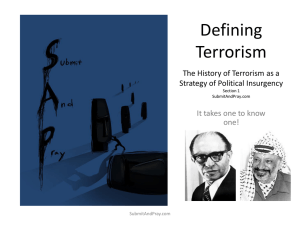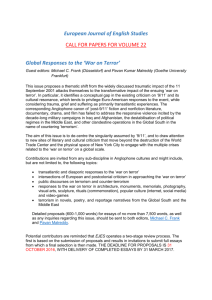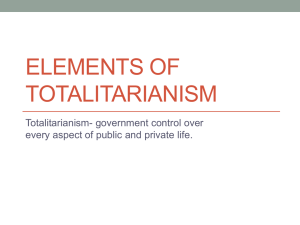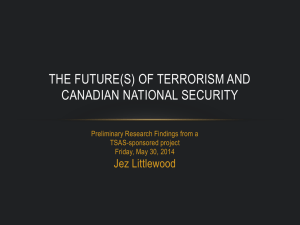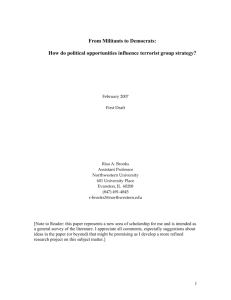discussion/lecture/questions week 2
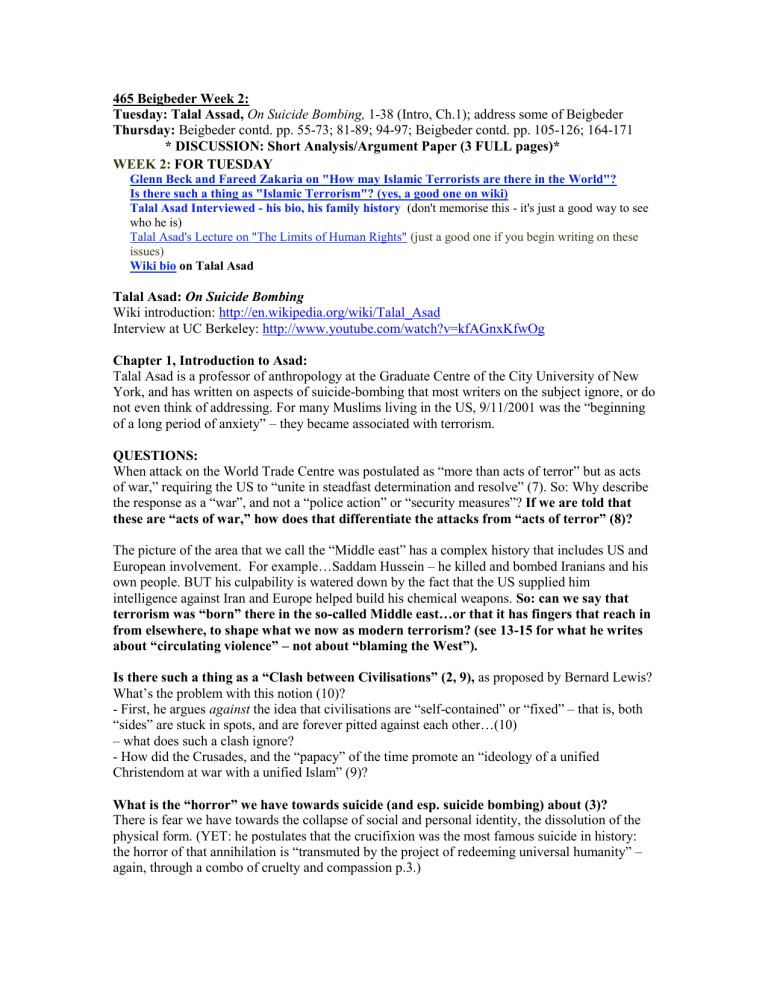
465 Beigbeder Week 2:
Tuesday: Talal Assad, On Suicide Bombing, 1-38 (Intro, Ch.1); address some of Beigbeder
Thursday: Beigbeder contd. pp. 55-73; 81-89; 94-97; Beigbeder contd. pp. 105-126; 164-171
* DISCUSSION: Short Analysis/Argument Paper (3 FULL pages)*
WEEK 2: FOR TUESDAY
Glenn Beck and Fareed Zakaria on "How may Islamic Terrorists are there in the World"?
Is there such a thing as "Islamic Terrorism"? (yes, a good one on wiki)
Talal Asad Interviewed - his bio, his family history (don't memorise this - it's just a good way to see who he is)
Talal Asad's Lecture on "The Limits of Human Rights" (just a good one if you begin writing on these issues)
Wiki bio on Talal Asad
Talal Asad: On Suicide Bombing
Wiki introduction: http://en.wikipedia.org/wiki/Talal_Asad
Interview at UC Berkeley: http://www.youtube.com/watch?v=kfAGnxKfwOg
Chapter 1, Introduction to Asad:
Talal Asad is a professor of anthropology at the Graduate Centre of the City University of New
York, and has written on aspects of suicide-bombing that most writers on the subject ignore, or do not even think of addressing. For many Muslims living in the US, 9/11/2001 was the “beginning of a long period of anxiety” – they became associated with terrorism.
QUESTIONS:
When attack on the World Trade Centre was postulated as “more than acts of terror” but as acts of war,” requiring the US to “unite in steadfast determination and resolve” (7). So: Why describe the response as a “war”, and not a “police action” or “security measures”? If we are told that these are “acts of war,” how does that differentiate the attacks from “acts of terror” (8)?
The picture of the area that we call the “Middle east” has a complex history that includes US and
European involvement. For example…Saddam Hussein – he killed and bombed Iranians and his own people. BUT his culpability is watered down by the fact that the US supplied him intelligence against Iran and Europe helped build his chemical weapons. So: can we say that terrorism was “born” there in the so-called Middle east…or that it has fingers that reach in from elsewhere, to shape what we now as modern terrorism? (see 13-15 for what he writes about “circulating violence” – not about “blaming the West”).
Is there such a thing as a “Clash between Civilisations” (2, 9), as proposed by Bernard Lewis?
What’s the problem with this notion (10)?
- First, he argues against the idea that civilisations are “self-contained” or “fixed” – that is, both
“sides” are stuck in spots, and are forever pitted against each other…(10)
– what does such a clash ignore?
- How did the Crusades, and the “papacy” of the time promote an “ideology of a unified
Christendom at war with a unified Islam” (9)?
What is the “horror” we have towards suicide (and esp. suicide bombing) about (3)?
There is fear we have towards the collapse of social and personal identity, the dissolution of the physical form. (YET: he postulates that the crucifixion was the most famous suicide in history: the horror of that annihilation is “transmuted by the project of redeeming universal humanity” – again, through a combo of cruelty and compassion p.3.)
The suicide bomber becomes associated with Islam, with Muslims, and “with an Islamic culture of death” (1).
And there is a belief that “organised violence called a jihad ” was an
“expression of Muslim intolerance towards non-Muslims…and that until the Muslim world is radically reformed, the danger of terrorism and “jihadism” will remain” (9).
So: what’s the problem of jihad being a “Central theme in “western histories of Islam,” where it is compared with the notion of a “Crusade” – when it is NOT a central concept in
“Islamic thought” (10-11)?
How have Muslim scholars formulated and debated the ideas behind jihad 11-12)?
Is there such a thing as “Islamic terrorism”? (1).
How is the word “terrorist” defined (26)?
(creating fear and insecurity among a civilian pop).
What’s the problem with this definition, when we look at the actions of WWII, and even current violence to civilian populations?
Why is the term “terrorist” difficult to define legally (27)?
Is there a “religiously motivated” terrorism?
And if so, does this “motivation” make it different from other cruelties? What makes this motivation “religious”? Is the “cause of terrorism” due to the “failure of Muslim countries to modernise” (17)?
How do we distinguish between “morally good” and “morally evil” ways of killing? (2)
How is “terrorism” and terrorist violence differentiated from “just war”, and how do states create “legitimised violence”, including inhumane treatment of prisoners (15, 16, 17)?
How does “feeling guilty” about violence help “legitimate” state violence(17-18)?
How does the use of “provocation” (or feeling “vulnerable” (22-3) and “proportionality” help justify state violence (19, 20, 21)?
– the contradictions are a part of our “modern subjectivity” – what does this mean to us?
He adds later that the book will address “our notions of what is cruel and what is necessary, and the emotions with which we justify or condemn particular acts of death dealing”: so clearly, we regard modes of killing differently.
– How do torture centres, interrogation, and having “special status” conferred during
“emergencies”/war against “barbarians” work within “just wars” (30-35, 36-7)? Why is that distinction between who is “civilised” and who is not important here (and therefore, it becomes imperative that we can “read” people and actions for hidden signs of their barbaric intentions)?
Terror is presented/dismissed as part of a nonmodern, non-liberal culture.
Liberal, “modern” subjectivity is seen as the urge to defeat political terror, the fear of social vulnerability, the horror and fascination with death and destruction.
BUT he proposes that terrorism is an “integral part” of modernity (2-3): “Legitimate violence exercised by the modern progressive state…possess characteristics NOT present in terrorist violence”: NOT because perpetrators of terrorist violence are particularly virtuous, but because the state is just capable of carrying out “a combination of cruelty and compassion that sophisticated social institutions enable and encourage” (3). These distinctions are what he’ll clarify and address, and which we will be learning about/debating.
Terrorism is an “epistemological object in modern society” – that is, an object of knowledge, study, conversation (28, 29). What are the reasons for the “prominence of a public discourse on terror”?
The idea of a War on Terror is “uniquely developed” in the US – most of the theorisation about war, terror, terrorism and just wars are formulated in these locations.
Why is the term “terrorism” so prominent in modern discourse, when we speak of “contemporary violence” (8, 15)? Is it because the “Muslim” terrorists are “outsiders”? How does Asad explain
the “incomprehensibility” of this violence to us, because it seems not “embedded in a historical narrative” ? (8)
BOTH terrorism and “just wars” are formulated in the US, Europe, Israel.
*He proposes: “creation of terror and the perpetuation of atrocities are aspects of military action in the unequal world we inhabit” (2). What does this mean?
He also proposes that the “War on Terror” ( not war on terrorism itself) is a war against a permanent state (30).
When does war become a problem for us? a) “Acts of war are not disturbing to most civilians when they are committed abroad” (30).
How has the wide dissemination of images on CNN, the internet changed some of that? And at the same time, how has the “overload” of images of war also countered our sensitivity/desire to act? b) Also, if our soldiers can kill without being killed themselves, we tend not to worry about the war too much (36). What disturbed this paradigm, in this age of “smart bombs”? Why did the US armed forces attempt to censor the images of soldiers’ bodies being brought back home?
Beigbeder:
1. We get a description of the Carthew Yorston – as a man, as a father. What do we learn about him? His sons? 64-5.
2. We get a view of the Narrator 2: a Bourgeois Bohemian (a Bobo) /Rich Rebel (RiRi) 67-8.
His parents met in Basque country, but left soon after for the US – “Middle class kids were inventing globalisation” (what does this mean?). 71.
How does he describe America, and Capitalism as a system with a “violence that is more covert”
(71-3)? Those in America were free to starve, yet people envied America…
3. Again, the specifics: this time, the specifics are of the planes. What do these specs tell us?
How does it impact us? a) First plane (p. 55): AA 11, going from Boston’s Logan airport to LAX; it was a Boeing 747, with 97 people on board), the floors (94-98). 10, 500 gallons of jet fuel.
Time: 7:59AM.
Speed: 500MPH
Impact: 265 tonnes of dynamite/0.9 on Richter scale. It was like an earthquake – bigger than
Haiti’s.
“The suffering” lasts: from impact to collapse - 102 mins (first building collapses):
102mins = long as a Hollywood film.
1344 people trapped on 19 floors above did not survive. b) 2 nd plane (105-6): United Airlines flight 175/Boeing 767, hits South Tower 9:02AM; 65 on board; 9 crew included. Faster than Plane 1: 580MPH. Between floors 78-84, and the plane flies almost through the building. Shock: 0.7, for duration of 6 seconds. Tower collapses at 9:59 – it is the first tower to collapse. c) The employees of the building: 62 nationalities (in a New York where they speak 80 languages). Why does he call them “Martyrs” – not “heroes” (169)?
4. “A Paleolithic bird, a spear point, a scimitar glimmering in the morning sunshine” (106)
57: When a Boeing 767 slams into a building below yr feet, here are two immediate consequences, says, B.
a) building becomes a “metronome”; b) your ears burn as fireball passes the window, smoke engulf everything.
82. What floats down: paper, contracts, post-its.
5.
What’s happening inside buildings?
How does Yorston react? His children (Anthony dis
168)? The employees of the restaurant?
A man calls his wife and tells her the specifics of insurance policies and employee benefit plans
(98).
Thursday:
FOR THURSDAY: "American Exceptionalism" why our belief that we are special helps us and hurts us : On the San Fran Examiner
Also possible: USA Today: http://www.usatoday.com/news/washington/2010-12-21-
1Aexceptional21_CV_N.htm
1. How is the relationship between France/US presented, and how the US is simultaneously
“understood” and critiqued?
– 13, 15, 16-19 a) US superiority complex, but Americans are also incredibly self-critical (18, 19) b) Americans “don’t give a shit about other people” (107-8):
You don’t want them to be part of your life?
They’ll be a part of your death c) What does he say are the “lessons” we learned from WTC/ and 9/11/2001 (8) d) Anti-American sentiments=unrequited love
Why so much anti American sentiment, after initial sympathy (85)?
How did people react (84, 85)?
Worldwide protest marches (93) e) What happened in the US after: Dow plummets, an Endless War begins. Paranoia about another attack, about vulnerability (165-166) f) Why television is a part of why revolutions happen – it makes people envious (though it makes people simultaneously complacent, too): “We call it globalisation, but it’s real name is television”
110-111. g) Skyscrapers = “temples to atheism and lucre”; and the WTC will gradually become a makeshift church (122). Why does he use the word “lucre”?
He says: he will not analyse…leave it to the proper theorists…(then he lists some - 111) h) The fight over who gets to design new buildings – Daniel Libeskind wins…
How does he describe the area and the mood? (169-171) – strip clubs, drinking, etc. i) We’ve been looking at why 9/11/2001 had such an impact – that it was a “symbolic” loss of power, safety, security.
But: “Terrorism does not destroy symbols, it hacks people of flesh and blood to pieces” (167)
American Exceptionalism:
It might as well be the national anthem: America the Exceptional. From the days of the
Revolution to the moon landing two centuries later, the idea that the United States is different from and better than anyplace else on Earth has rallied its citizens and propelled its aspirations.
Eighty percent of Americans in a USA TODAY/Gallup Poll say they believe the country has a unique character and unrivaled standing — a higher degree of national unanimity than on any current policy issue.

